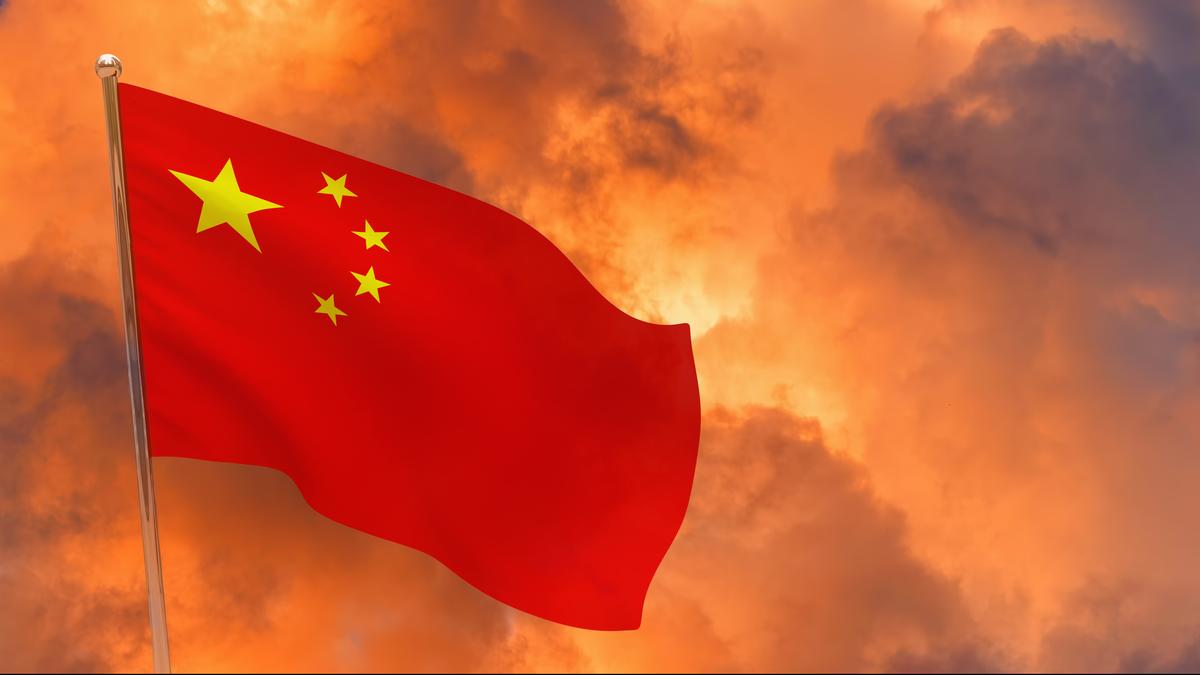
‘The fall of Bashar al-Assad’s regime in Syria has opened a core security crisis for the Chinese’
| Photo Credit: Getty Images/iStockphoto
Over the past two years, China’s foreign policy has been consistent in the manner of largely supporting the Arab positions over Gaza, which included hosting Hamas in Beijing, amongst other Palestinian entities, to try and mediate. Its position in Arab hearts and minds has grown and recent surveys have put the United States below its eastern competition in popularity. However, the fall of Bashar al-Assad’s regime in Syria has opened a core security crisis for the Chinese by way of a stronger political position for Uyghur militants in the ‘new’ Damascus under President Ahmed al-Sharaa.
Getting a safe space
As in multiple reports, Uyghur militants belonging to the East Turkistan Islamic Movement (ETIM) — also known as the Turkistan Islamic Party (TIP) — have scored prominent positions in the revised Syrian army. Ahmed al-Sharaa took over in a largely unchallenged juggernaut when his group, the Hay’at Tahrir al-Sham (HTS), arrived in the Syrian capital without any major battles. The HTS has been at the centre of the anti-Assad movement since the initial stages of the Arab Spring led by Al Sharaa (better known then as Abu Mohammed al Jolani, and his cohort of fighters from across the world). This was a time when Syria was a hotspot of global jihadist movements and the so-called Islamic State (IS) controlled large swathes of territory across the Levant region.
Al Sharaa, who has had stints with the IS and al Qaeda, developed his own support base over time. The HTS also offered safe space for those who were seeking shelter or ideological patronage. Here, Uyghurs militias found the opportunity to construct their own sanctuary while offering tactical backing to the HTS. During the period beginning 2011, Uyghur militias were intricately woven into IS ecosystems. Propaganda videos and publications featuring Uyghur fighters were actively promoted — these ranged from well produced videos of Uyghur fighters taking on Assad’s military to ideological propaganda translated into the Uyghur language in audio and text formats. More recently, in 2017, the IS released a targeted video showing Uyghur fighters in training and threatening ‘rivers of blood’ against the Chinese state. In the immediate past, China has seldom featured in IS propaganda as the Washington-Beijing contestation has taken centre stage.
Fast forward to 2025, and Syria’s military and polity are being rebuilt. The first is arguably a more delicate endeavour than the second, with bringing a wide variety of warring factions to rally behind one leader being easier said than done. In Syria’s ‘new’ military, those who fought alongside Al Sharaa have been given precedence irrespective of their nationality. The journey, from jihadists to generals for many, has been taking place swiftly since January. One of the biggest representations overall is by the Uyghurs — nearing 2,000 in number by some estimates. At least one of the known 50 high-ranking commander-level appointments is an Uyghur — Abdulaziz Dawood Khodaberdi (known as Zahid), who has been recognised as a former commander of ETIM in Syria.
Impact of big power competition
For Beijing, this elevation opens an automatic fault line with Damascus, with which it has enjoyed friendly relations in the past. One of the core reasons why China rallied behind America’s ‘war on terror’ narrative was to use American hegemony to deliver on its own counter-terror interests. In 2002, the U.S. had classified ETIM as a terror organisation, only to remove it in 2020 based on the argument that no credible evidence of ETIM’s existence was available for over a decade and that China was using it as a bogey to clamp down on Uyghurs in its restive Xinjiang province. The advent of big power competition between the U.S. and China has in fact only given militant groups more manoeuvring space globally. Previously, Beijing has made handling of ETIM a top priority in its relations with the new Taliban-led government in Afghanistan. However, most militant groups now in charge of para-states, tend to always first prioritise their support for those who fought with them in the trenches. Soon after the Taliban took charge of Kabul in August 2021, it was reported that the group had relocated Uyghur militants away from Afghanistan’s narrow 76-km long border with China in the Badakhshan province. Unlike the Taliban, the new regime in Syria has taken a different approach — elevating the Uyghurs to official ranks.
The western game plan
The Chinese government has raised this issue in the United Nations as western and regional powers alike rush to engage with Al Sharaa. The western engagements in play are to solidify two fronts. First, to place basic security in the embattled state and stem any mass migration. Second, to make sure Russia, Iran, and, by association, China remain in the peripheries and maintain minimal influence. These larger geopolitical aims have allowed now former designated terrorists to metamorphose into statesmen overnight.
The challenge for Chinese diplomacy continues here. One of the main regional powers that is still kinetically and overtly active in Syria is Israel. But both China and Israel have been at odds over China’s stance on Gaza and the issue of Palestine. Even on the Arab side, Saudi Arabia, and the United Arab Emirates, amongst others, who have previously given Beijing a pass over Xinjiang, have accepted al Sharaa, thus limiting Beijing’s options and forcing a strategic re-think moving forward.
Kabir Taneja is Deputy Director and Fellow, Strategic Studies Programme, Observer Research Foundation
Published – April 15, 2025 12:08 am IST
